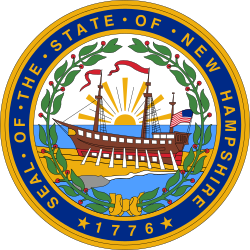| |||||||||||||||||
| |||||||||||||||||
 County results Keyes: 50-60% | |||||||||||||||||
| |||||||||||||||||
| Elections in New Hampshire |
|---|
 |
The 1916 New Hampshire gubernatorial election was held on November 7, 1916. Incumbent Republican Governor Rolland H. Spaulding declined to seek re-election. [1] Republican nominee Henry W. Keyes, the former chairman of the state Excise Commission, defeated former State Senator John C. Hutchins, the Democratic nominee, with 53 percent of the vote.

